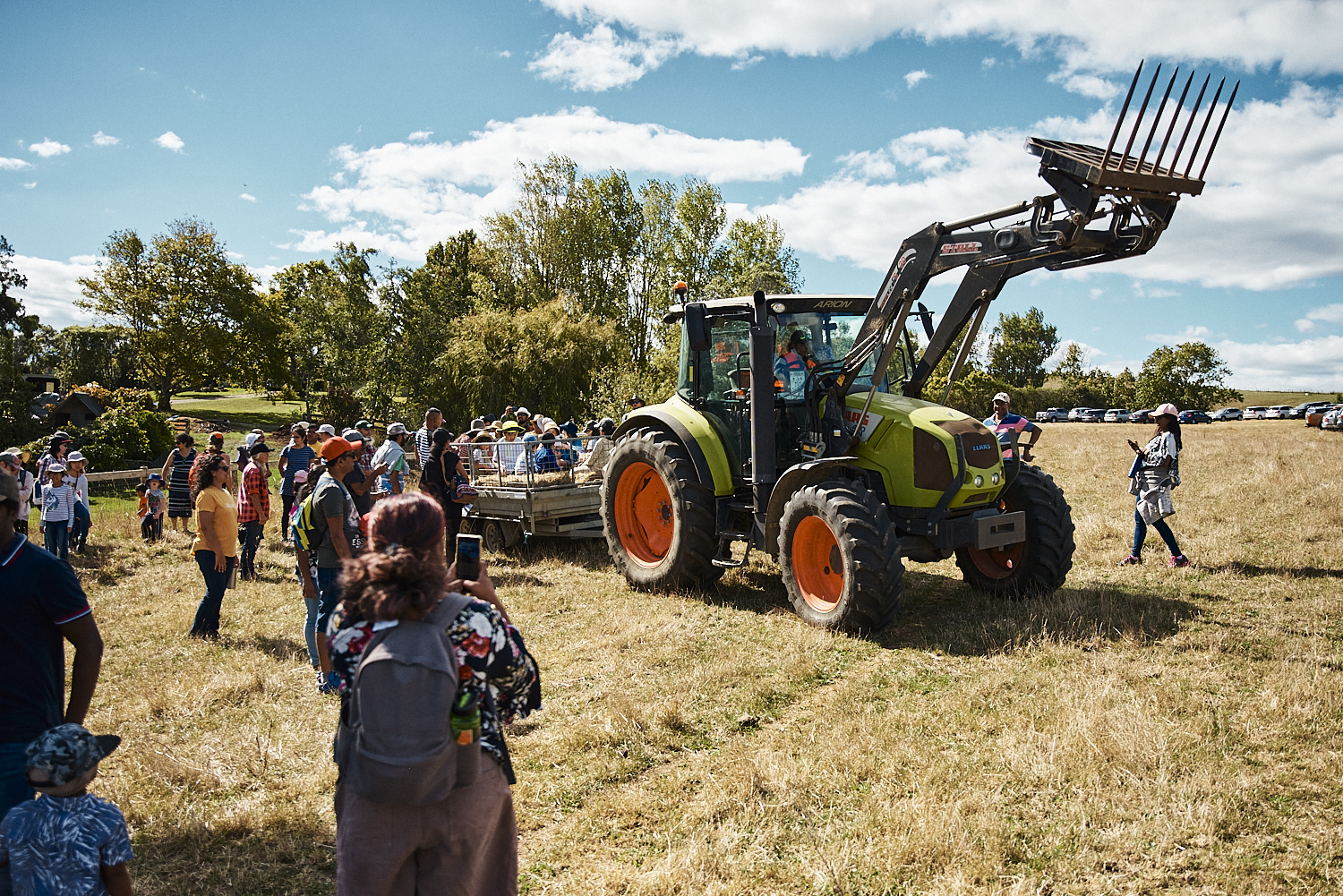Hosting a great Open Farm Day is about communicating the favourite bits of your farming story in a way that’s accessible, interactive and fun for visitors.
When choosing activities for your day, consider:
- The visitor’s perspective. For many of your visitors, this will be their first time on-farm. Don’t underestimate how effective simple activities can be. Simply walking in the fields, digging up some dirt to count worms, watching stock move through the yards or interacting with an animal are all unique experiences.
- Participation is key. Wherever possible, give visitors the chance to interact and get hands-on with the farm. Children in particular have short attention spans and learn by doing. This is about engaging the senses too – encourage visitors to look, listen, touch, smell and even taste their way around! Visitors could feel a fleece, run their hands through seeds and listen to birds. Here’s a good example – a sheep and beef farmer did a short stockyard demonstration of drenching, then let the kids loose to muck around with a disinfected, water filled drench gun.
- Make it relevant. Remind people that they are connected to the farm – the food you grow ends up on their supermarket shelves. Start with what they know and work backwards.
- Keep it short and simple. The adult concentration span is about 10 minutes. Much less for kids. Don’t overload presentations and keep them short – visitors will naturally gravitate to what they find most interesting.
There are some great resources and tips available through Farming is Magic and LEAF in the UK.
Participation activities
- Sit in a tractor
- Collect eggs
- Dig up vegetables
- Investigate the soil – worm, root and pasture species counts
- Set up a nature trail, farm safari or bug hunt
- Supervised dam swim or waterslide
- Tractor-trailer rides
- Meet the animals – set-up contact areas with supervision and hand-washing
- Guess the weight game in the stockyards
- Run a mock stock auction
- Organise a quiz eg. guess which products come from which plant; guess which hoofprint and manure belong to which animal!
- Games and competitions – running races, egg & spoon races, sack races, gumboot throwing
- Hay bales climbing castle
- Set-up fencing standards
- Native tree planting (March isn’t the best time, but an accessible wet patch might still work)
- Build a bug hotel
- Paint a farming mural on the barn wall
- Seed or seedling planting (perhaps in egg boxes that people can take home?)
- Water critter buckets – catch and showcase some aquatic life
- Mini fields – construct a metre-by-metre frame to overlay on pasture/fields and have visitors investigate or catalogue plant and insect species
- Map sticks – visitors collect items on their farm walk (e.g. different leaves, bit of fleece, feathers) to attach them to a stick, which becomes a reminder of their trip
- Compost making
- Seed saving
- Mini worm farm making (in old soft drink bottles)
- Poultry care, including picking up a hen the right way and collecting eggs
- Using traditional tools (where safe to use)
- Harvest a crop (e.g. potatoes, kale)

Presentation activities
- Farm walk
- Shearing
- Milking
- Stockyards (animal lifecycle, animal health, data collection)
- Crop varieties display
- Silage making
- Machinery demonstration
- Display how much food animals eat in a day
- Bee keeping
- Dig a soil pit to explore plant roots and soil structure
- Fresh produce cooking demonstrations
- Recruit your local vet for an animal health presentation
- Recruit a representative from your local catchment, nursery, DOC station or planting group for a regeneration tour. Better yet, plant some trees if the area allows.
- Recruit a representative from your local Predator Free trapping group for a talk and demonstration
Farm walk & presentation tips
First impressions count. Make the effort to personally welcome most or all visitors on the day. Visiting a farm can be an apprehensive experience for some and a warm welcome goes a long way.
Pick the right person. An enthusiastic presenter will make for a memorable tour or presentation.
Be positive. This is your chance to represent agriculture, inspire a few Kiwis and be proud of the work you do. If in doubt, remember the Open Farms Code of Conduct.
Key Messages. What’s the one thing you want your audience to leave with? Think about how to make that message most relevant to visitors and repeat it during the day.
Keep it personal. Your visitors are far more likely to remember stories about you and your family, your animals, farm work and why you love farming. Facts are helpful, but they don’t resonate like real, human stories do. Watch out for too much farming jargon too.
Body language. Arrange the group so you’re facing everyone, avoid crossing arms, look your visitors in eye and smile!
Use props. Props help to make an experience memorable. Carry a few around with you, have some prepared at stations or stands and pass them around.
Plan your stops. These don’t have to be far apart – plan to the slowest visitors (children and elderly).
Practice. It makes perfect.
Be heard. Pick sheltered spots out of the wind for your presentations, gather your audience close by and repeat quiet questions for all to hear.
Variety and flexibility. Keep presentations short and keep moving. Be guided by your audience – when you see people start to lose focus, move on. Similarly, if people are engaged in an activity, feel free to linger. A timekeeper might be handy too.
Encourage interaction. Ask broad questions e.g. “show of hands”, ask for volunteers and repeatedly welcome audience questions.

